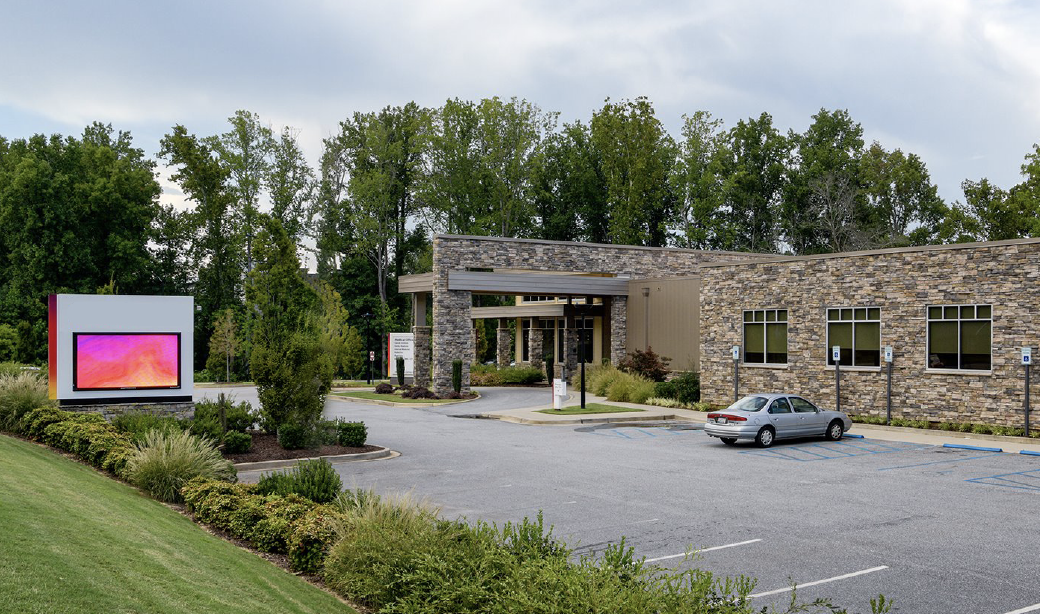Live Event
Real solutions from experts who've moved the needle on burnout
Register Now
Group
60-Physician Radiology Group Associated with Multi-Site Health System
Specialties
Radiology
Implemented Solution
Lightning Bolt Scheduling
TABLE OF CONTENTS
A 60-physician radiology group affiliated with a state’s largest health system covers multiple locations across various subspecialties. It also includes six APPs and offers a full range of imaging services for patients of all ages.
The radiology group was using another automated scheduling solution to create a standard monthly schedule. However, they were still manually building complex vacation and holiday schedules before automating on-call shifts.
When a new Lead Scheduling Physician assumed the task of building the monthly schedule, it quickly became clear how time-consuming and inefficient the process was—especially when accounting for holidays, vacations, provider preferences, multiple locations, and varied shift types. Frustrated with the inefficiency, the physician sought a new solution that could optimize and auto-generate schedules with reduced manual input to streamline the process from start to finish.
The health system is extensive and includes about 20 hospitals, 300 physician practice sites, and two clinically integrated networks with over 4,500 providers. The radiology department wasn’t the only department that needed to find a solution capable of managing enterprise-level scheduling complexities. As long-time users of PerfectServe’s clinical communication platform, the health system evaluated Lightning Bolt for its potential to streamline scheduling and integrate with communication workflows.
After deciding on Lightning Bolt’s healthcare scheduling software, the organization initiated a rapid enterprise-wide solution deployment. Using a ‘rip and replace’ approach, implementation teams rolled the solution out to over 2,100 providers in just three months.
Dedicated technical consultants supported each department to ensure proper implementation and user training. The radiology department’s Lead Scheduling Physician and others collaborated with the Lightning Bolt team to optimize schedules, improve workflows, and continue refining processes to save time and enhance work-life balance for providers.
1
Intelligent Optimization
The radiology department uses credit hours—a unique tactic for assigning compensation to a particular type of shift—to track shifts worked, ensure accurate compensation, and distribute workloads evenly among providers. Before Lightning Bolt, it was difficult to confirm whether shift loads were balanced, potentially affecting the accuracy of provider compensation.
The department also schedules “gap credits” to track non-clinical shifts for activities like attending conferences or serving on executive committees. These required credits must be carefully scheduled to avoid impacting patient care while being distributed fairly. Managing these complexities requires a system that tracks both scheduling and payroll reporting to ensure transparency and equity.
Despite these complexities, Lightning Bolt auto-generates nearly all of the department’s schedule, equalizing credit hours across the year while maintaining accurate payroll. The Lead Scheduling Physician is then able to easily schedule any remaining tasks— medical school interviews, new hires, and administrative duties—around the optimized schedule.
2
Beneficial Time Savings
Lightning Bolt has significantly streamlined the process of creating the regular monthly call schedule. By automatically building schedules around providers’ time off, it has transformed what was once a time-intensive task into a much more manageable and efficient workflow.
The result is a smoother, more flexible scheduling process that meets both provider preferences and organizational needs.
3
Supporting Strategic Growth in Interventional Radiology
The group aimed to expand its interventional radiology service line, requiring a 50% increase in daily staffing—from two to three providers. They leveraged Lightning Bolt’s algorithm to gradually adjust assignments: starting with half-day interventional shifts, then full-day shifts, and ultimately five-day-per-week interventional coverage.
This incremental approach allowed the group to scale their service line strategically without overburdening providers, effectively matching staffing levels to work demands. By aligning resources with patient needs, the group achieved greater efficiency and reduced waste.
“Lightning Bolt has allowed for incremental growth in our service lines. Interventional Radiology used to do two days reading and two days doing interventions. Now we have a full schedule five days a week [of interventions], and the Lightning Bolt algorithm helped us do this.”
—Lead Scheduling Physician
4
Easier Shift Swaps, Trades, and Requests
In Lightning Bolt, providers are scheduled in specific seats to read images during their shifts and can now request certain seats for an added layer of autonomy.
Providers can also submit shift swaps and time-off requests. Some requests are automatically applied based on pre-set guidelines, while others require approval before being added to the schedule.
5
Streamlined Shift Prioritization
Updating shift priorities within Lightning Bolt is a game-changer for the group. For example, the mammography assignment designates one primary physician and three backups—A, B, and C—ranked by priority. This structure is mirrored across multiple hospital locations to ensure fair and efficient backup coverage.
6
Mobile App Increases Schedule Access and Vacation Visibility
Providers now have real-time access to their schedules in Lightning Bolt’s mobile app, which can be shared via link. Techs have access to a view-only version to ensure they contact the correct providers.
The system also integrates vacation schedules seamlessly, offering clear visibility into time-off requests and approved time off. This transparency helps reduce scheduling conflicts and ensures providers can easily access important information.
7
Enhanced Communication for Better Care Coordination
Lightning Bolt integrates with PerfectServe to improve communication and care coordination. The system supports messaging, escalations, and workflows for specific procedures, with messaging groups for peds call, stroke, lumbar punctures, general questions, and angio. The system uses Lightning Bolt assignments to determine the correct contact to ensure messages reach the right person.
This integration reduces communication bottlenecks by evenly distributing call responsibilities among team members, alleviating the burden on individual providers. Another integrated workflow using PACS and PowerScribe automates the delivery of radiology reports for stroke and trauma cases, enabling faster clinical response and improving patient outcomes.
8
Detailed Insights With Reports
The radiology department uses Lightning Bolt reports to ensure credit hours and gap credits are accurate. These reports include paid hours and quarterly compensation reports and help validate payroll to increase pay transparency. The Lead Scheduling Physician exports shift credit reports for accountant review and payroll verification.
Reports can also be run when the schedule is published to confirm fairness and re-run throughout the year to assess the impact of swaps and changes on shift distribution. Additional reports, like after-hours reports, track and compensate clinicians for on-call coverage, ensuring shifts are equitably distributed.
In just three months, the radiology group overhauled its scheduling protocols, streamlining nearly the entire process. With Lightning Bolt now managing complexities like gap credits, time off, and shift swaps, the team has reclaimed valuable time and improved overall efficiency.
The Lead Scheduling Physician’s team plans to explore additional opportunities for efficiency gains and leverage Lightning Bolt’s integration with PerfectServe’s clinical communication platform to automate alerting for significant imaging findings. The entire care team is highly satisfied with the improvements, and with more potential to unlock greater functionality in the future, this project highlights how optimized scheduling can directly contribute to better outcomes.
